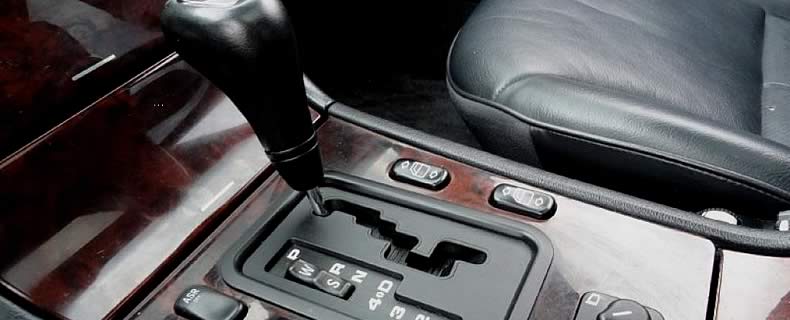
transmission
To keep your automatic transmission in good working order and prevent costly repairs it is important to change the automatic transmission fluid (ATF) periodically. However, in many transmissions, there is no drain plug on the torque converter, which holds much of the fluid, so it cannot be completely drained to remove all the old fluid. This is all the more reason to change the fluid frequently as well as replace filters and cleaning screens.
There are a couple of ways to replace all the ATF without disassembling the transmission. Probably the best way is to use a fluid flushing machine which replaces all the ATF. A good transmission shop should have such a machine. You should definitely flush the transmission if you are switching from a petroleum-based ATF to a synthetic ATF. While the two types of fluid are compatible, pure synthetic ATF, which costs more, will provide the maximum benefit.
Amsoil Inc., one of the largest marketers of synthetic oil, ATF and other products, offers a technique for removing virtually all the old ATF from the transmission. First, service the pan as normal while changing the filter. If the transmission is equipped with a rubber-on-steel gasket, carefully clean and reuse the gasket. Otherwise install a new gasket, if one is used. Fill the pan with fresh fluid, but do not start the engine yet.
Disconnect a transmission cooler line at the radiator, screw
an adapter into the radiator side and slip a piece of tubing
on both open lines and run both tubes into a collection bottle.
Have a helper crank the engine over and stay in the drivers
seat. If you have raised the vehicle off the ground, make sure
you use jackstands. Leave transmission in park. On some Chrysler
products, you will have to put the transmission in neutral.
Fluid will be pumped out one of the two pieces of tubing from
the torque converter. Fill the transmission as the fluid is
being pumped out. When you get all the old fluid out you will
notice a change in tint as new fluid replaces the old stuff.
Check your owner’s manual to determine the amount of
ATF the transmission holds as another indication when all fluid
has been replaced. Shut the engine off immediately, reconnect
the system properly, run, test drive and verify proper fill
level.
For most people, the only thought given to the automatic transmission is a fleeting one when selecting a gear and driving away. An automatic transmission is nothing more than a giant hydraulic pump that internally lubricates itself, cools itself, and, ultimately, through application of a series of gears, clutches, and internal "hard parts," propels the car forward.
Here's how the transmission works. When a gear is selected, oil (or transmission fluid) is routed under pressure (created by its internal pump) through the valve body. The valve body (or brain of the transmission) is electronically and hydraulically controlled. Oil is then forced through the torque converter at high pressure creating a fluid coupling between the engine and transmission. This fluid coupling is similar to what happens when the clutch is applied on a standard transmission. Just as the clutch connects the engine to the transmission, so does the torque converter through a fluid coupling. This fluid coupling is achieved by forcing the transmission fluid through a series of restrictive passages called fins (very similar in design to turbine engines on a jet).
Now that there is a fluid linkup, how do we accelerate forward and shift gears? The gears are applied by a series of mechanisms called servos and bands; engine electronics and hydraulic pressure control the application of these. For example, when the gas is depressed, the ECM (Engine Control Module) sees the need to shift, so an electronic signal is sent to the transmission to downshift into passing gear. Electrical switches called solenoids are then tripped, valves within the valve body divert the flow of oil to the bands or servos, which in turn apply or disengage gears. Just like magic -- the transmission shifts. For all this to happen in perfect harmony, certain things must be in place:
* Smooth oil flow
* Strong calibrated oil pressure
* Properly functioning engine controls
Take away any of these conditions and gremlins start to appear in the form of transmission malfunction. For instance, if the electronic engine controls malfunction, erroneous signals are sent to the transmission causing it to shift erratically. Or inhibit the flow of oil due to a clogged filter and the transmission can "drop out" of gear into neutral due to low internal oil pressure. Dirt flowing through the system can cause valves in the valve body to stick, which result in the transmission getting stuck in a particular gear and not shifting. The loss of strong, calibrated oil flow due to a worn internal pump or a stuck pressure regulator valve can cause all of the above.
Keep your engine tuned. Poorly running engines can push the transmission to extremes trying to carry out commands from a diseased electronic engine control system.






